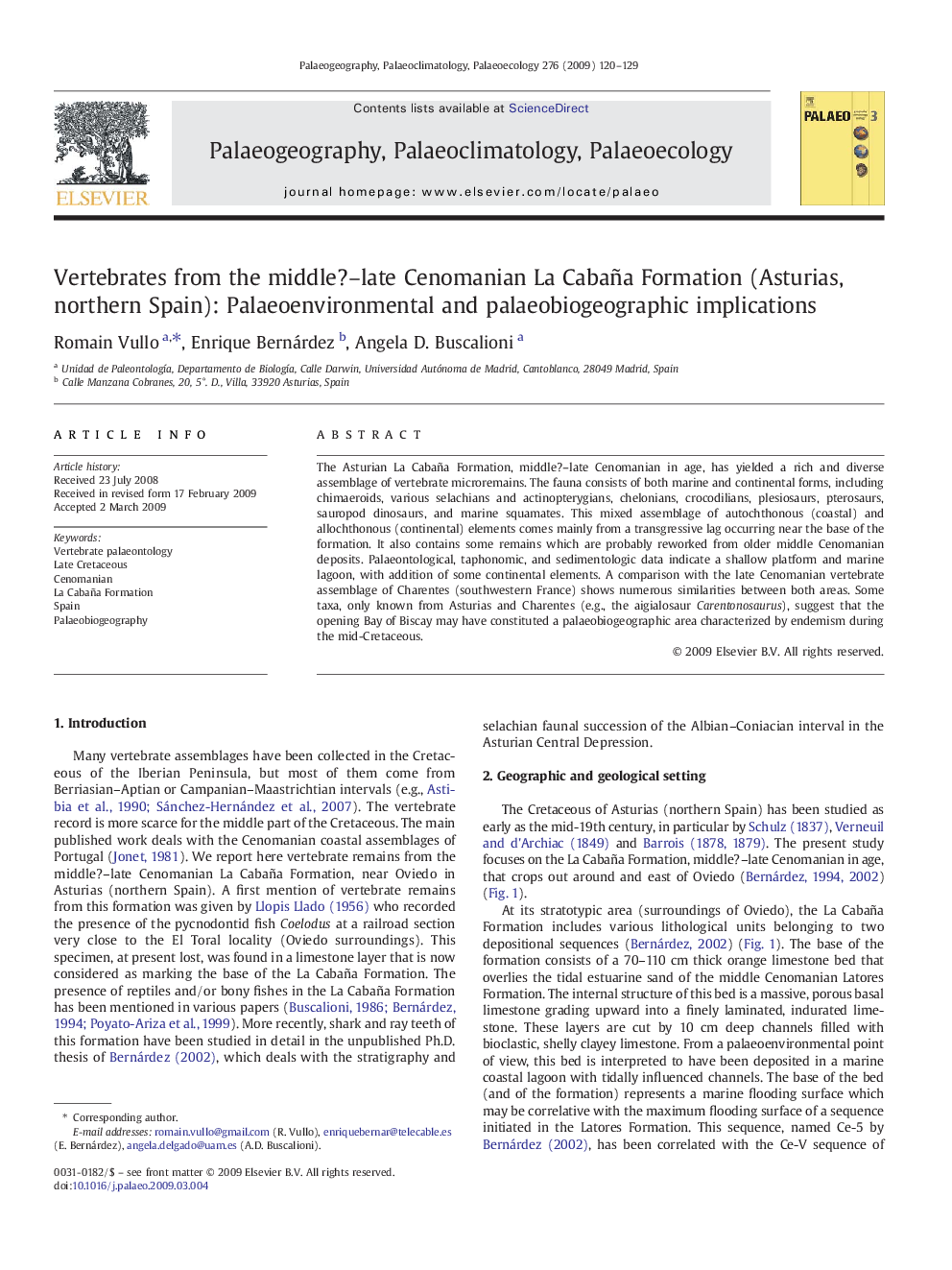| Article ID | Journal | Published Year | Pages | File Type |
|---|---|---|---|---|
| 4468219 | Palaeogeography, Palaeoclimatology, Palaeoecology | 2009 | 10 Pages |
The Asturian La Cabaña Formation, middle?–late Cenomanian in age, has yielded a rich and diverse assemblage of vertebrate microremains. The fauna consists of both marine and continental forms, including chimaeroids, various selachians and actinopterygians, chelonians, crocodilians, plesiosaurs, pterosaurs, sauropod dinosaurs, and marine squamates. This mixed assemblage of autochthonous (coastal) and allochthonous (continental) elements comes mainly from a transgressive lag occurring near the base of the formation. It also contains some remains which are probably reworked from older middle Cenomanian deposits. Palaeontological, taphonomic, and sedimentologic data indicate a shallow platform and marine lagoon, with addition of some continental elements. A comparison with the late Cenomanian vertebrate assemblage of Charentes (southwestern France) shows numerous similarities between both areas. Some taxa, only known from Asturias and Charentes (e.g., the aigialosaur Carentonosaurus), suggest that the opening Bay of Biscay may have constituted a palaeobiogeographic area characterized by endemism during the mid-Cretaceous.
